[ad_1]

-
In June, Air New Zealand unveiled new airplane cabins for long-haul flights.
-
I previewed the changes travelers can expect when the new Boeing 787-9 fleet starts service in 2024.
-
The cabins have wireless-charging stations for business class and bunk beds for economy passengers.
In late June, I traveled to Auckland, New Zealand, for a first look at the airline’s redesigned cabins. The cabins will be on Air New Zealand’s new eight Boeing 787-9 Dreamliners, which are slated to fly in 2024.

For full disclosure, Insider received a press rate for the round-trip flight to Auckland, New Zealand.
While the process of redesigning the cabin has taken more than five years, I saw a real-life model that had been constructed days earlier in Air New Zealand’s offices.

I explored a replica plane with Kerry Reeves, Air New Zealand’s head of airline programmes and the person leading the cabin’s redesign. As he pointed out major and minor changes in the new cabin, I saw firsthand how it would create a flight focused on privacy and sleep.

Currently, the airline’s long-haul flights have three classes: business premier, premium economy, and economy. According to Air New Zealand’s website, a round-trip flight from LA to Auckland starts at $6,440 for business premier, $3,055 for premium economy, and $1,255 for economy.
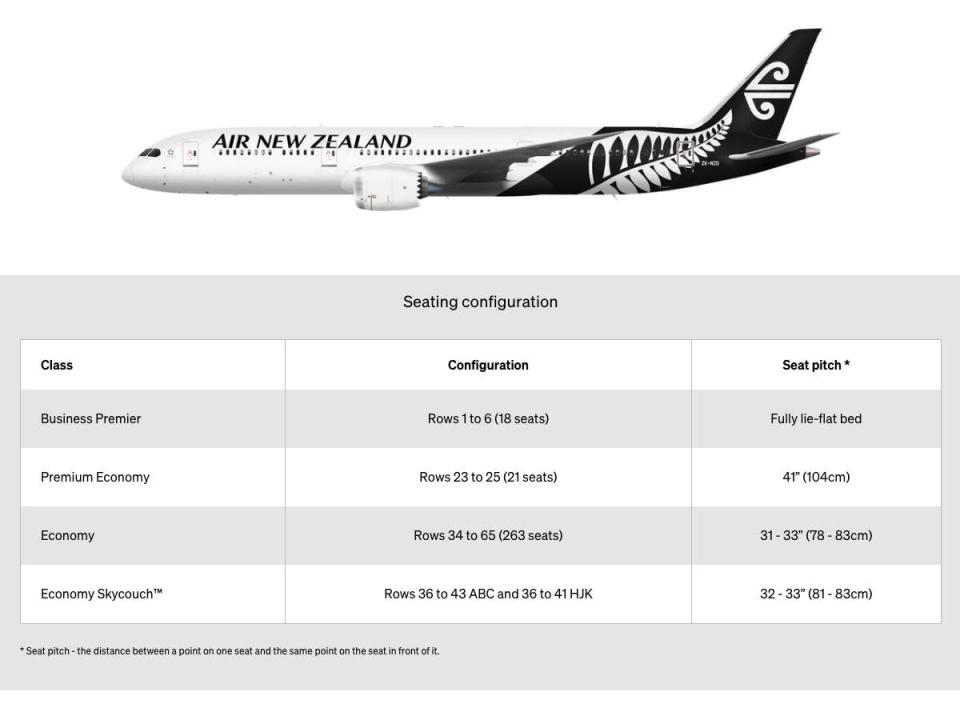
Source: Air New Zealand
Air New Zealand’s new planes will keep these three classes and add a new seat-type within its business-premier class called business premier luxe.
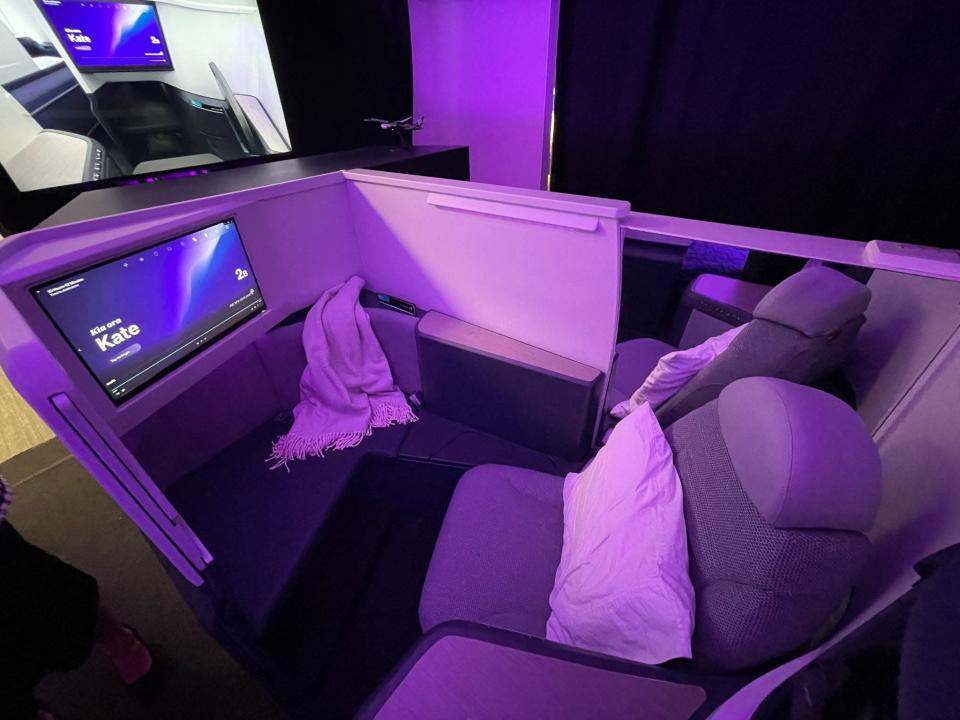
Both business premier and business premier luxe are considered first-class, but the luxe seats have more space and privacy. Air New Zealand hasn’t set prices for each seat yet but says its business-premier-luxe seats will cost more than business-premier.

The luxe seats, which Air New Zealand calls suites, have an exterior door that closes off to other passengers and flight attendants.

Business-premier seats will have a smaller privacy wall than business-premiere-luxe suites.

In the luxe suites, I spotted a wraparound bench large enough for another passenger. Reeves told me it’s designed so that pairs traveling together can share meals in a single suite.

The business-premier seats lack a wraparound bench, but there is a foot rest for the traveler.

Both business-premier and business-premier-luxe seats have lie-flat beds.

All first-class passengers will be able to move their seats into the fully horizontal position themselves in the airline’s new cabin. In the current cabins, a flight attendant has to switch seats into beds.
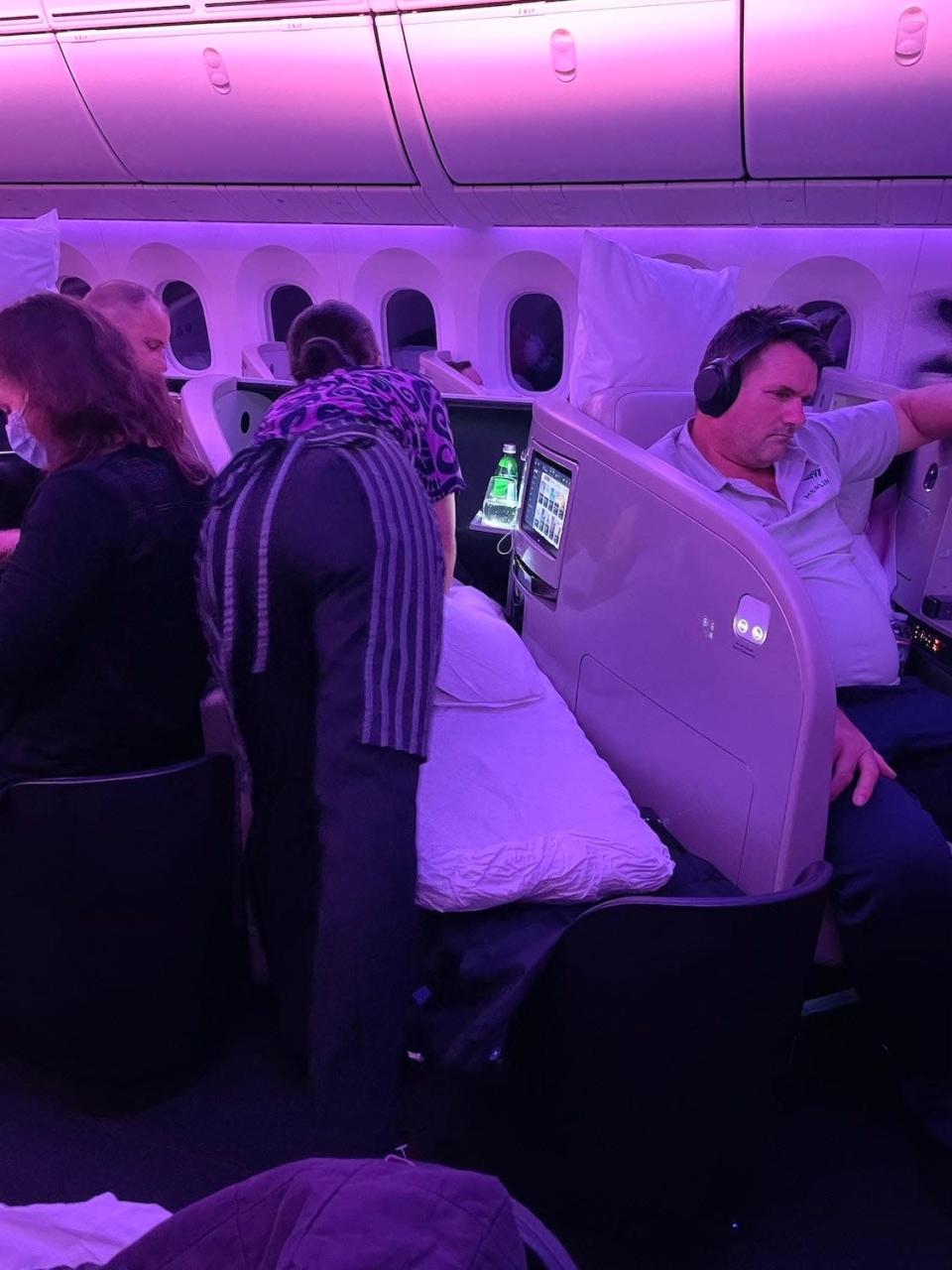
Business-premier and business-premier-luxe passengers will also have more seat positions than they currently do.

Reeves said Air New Zealand is currently working with the Federal Aviation Administration to get approval to be the first airline to allow business-class passengers to take off and land in reclined positions.

Regardless of whether a passenger is in business-premier or business-premier-luxe, I noticed that those sitting in the interior row of the plane have a sliding door that connects or disconnects them from their neighbor.

Reeves also pointed to other new details that business-premier and business-premier-luxe passengers can expect like wireless-charging stations …

… and larger screens. In the new cabins, passengers will have 24-inch TVs (rather than 13-inch TVs, as in the current cabins) that connect to Bluetooth.
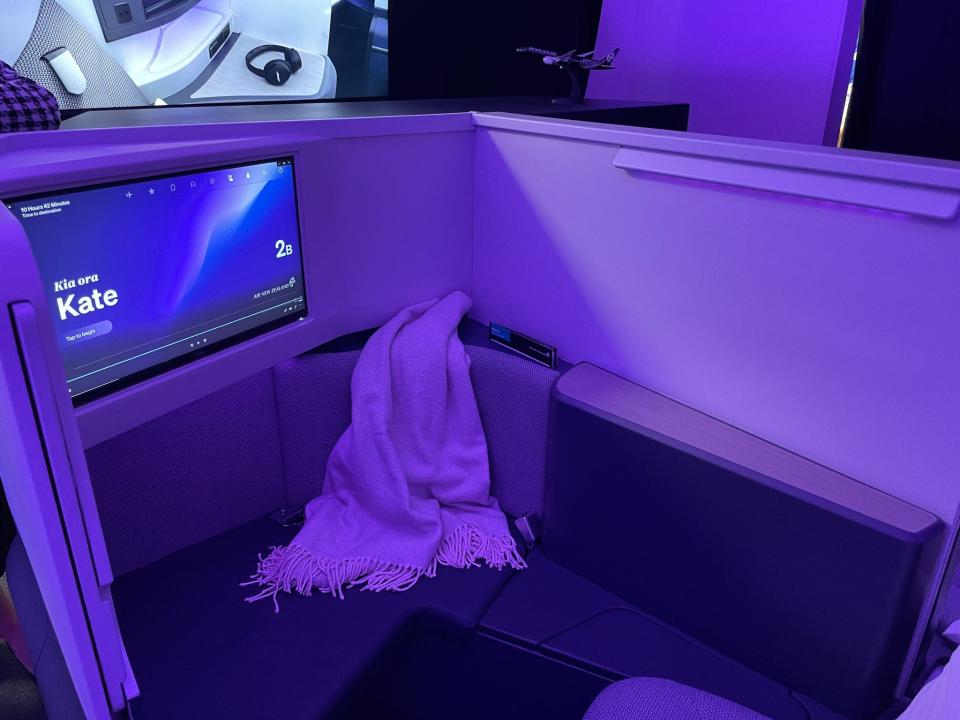
Overall, I thought the new first-class seats seemed more private compared to the current design. Today, business-class passengers have lie-flat beds that are angled toward the center of the plane.

I sat in the current business-class section on my flight to New Zealand, and while I was able to get a full night’s rest, my seat felt exposed to other passengers.
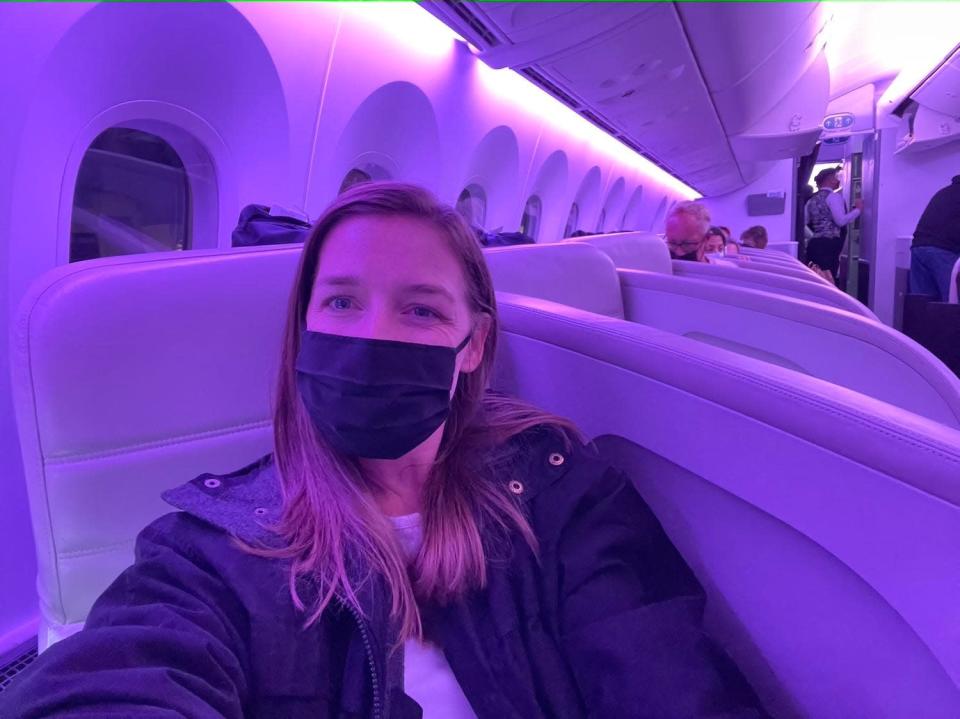
Reeves said the airline’s new Dreamliners will have eight business-premier-luxe seats and 42 business-premier seats. This is nearly double the number of seats on the airline’s current Boeing 787-9 planes.

On my flight over, there were 27 business-premier seats and no business-premier-luxe seats. Air New Zealand will retrofit its current Boeing 787-9s with the new cabin design, but with four business-premier-luxe seats and 22 business-premier seats, Reeves said.

After I previewed first-class offerings, I entered the model’s future premium-economy cabin.

In premium economy, Reeves noted the new headrest with two lights that now extends outwards — an effort to create a sense of privacy.

The new economy-plus seats exchange 13-inch screens for 15 inches, and below each seat there’s now a footrest.
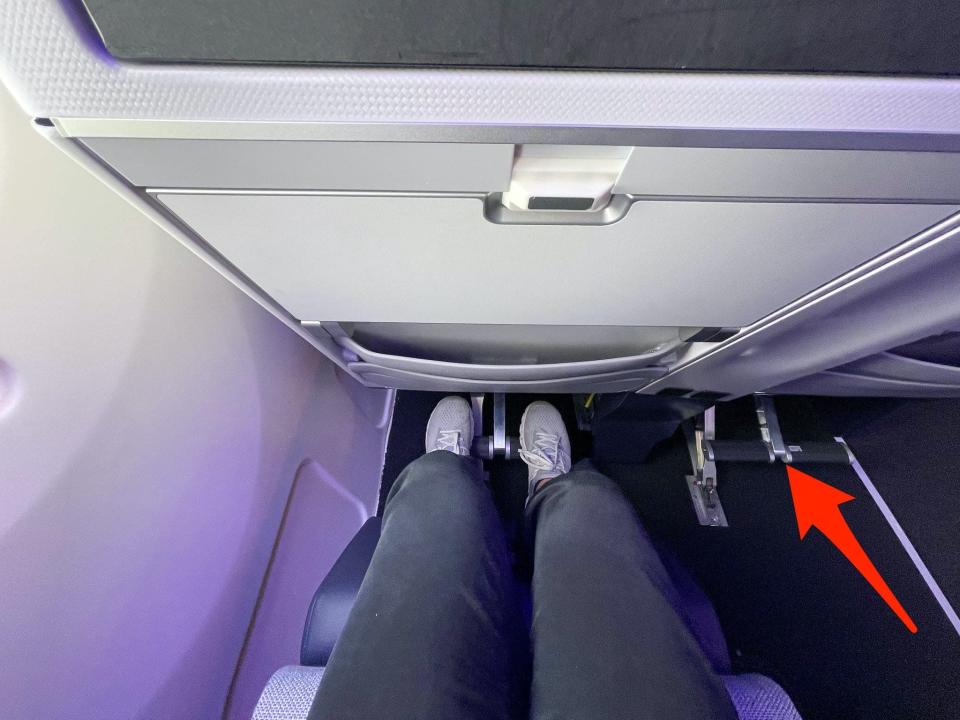
Finally, I navigated to the economy seats at the back of the model plane.
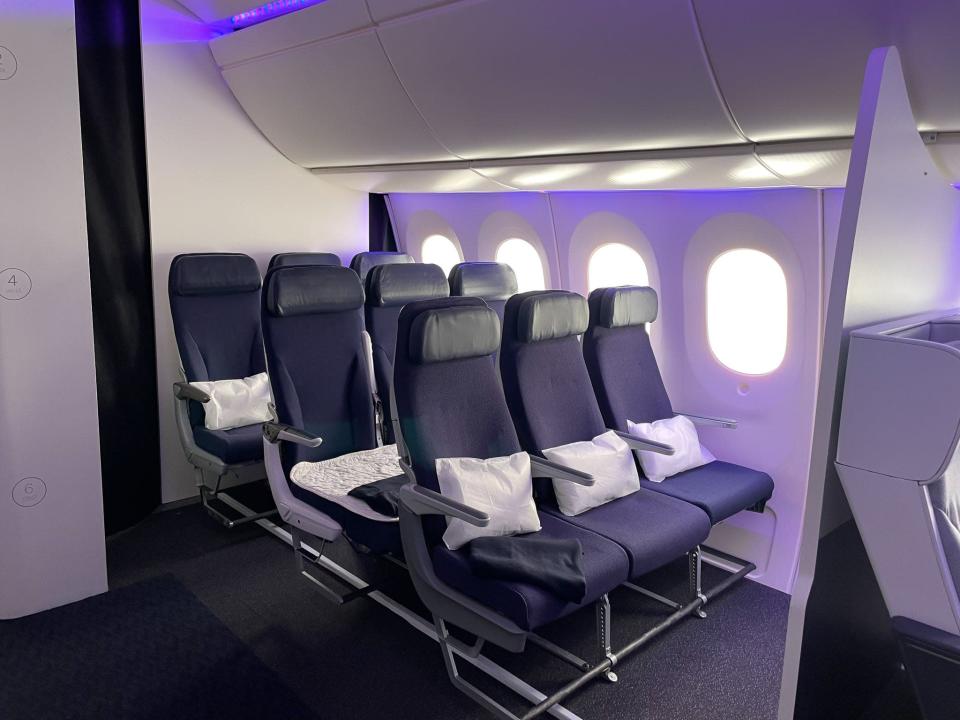
Coach passengers will still be able to opt for Air New Zealand’s Skycouch. It’s currently available on long-haul flights and allows passengers to purchase a row of seats that transform into a couch with help of a footrest. The cost varies, but on a recent search, I found the upgrade would cost an extra $1,400 each way.

Next to the Skycouch, I saw the most unique part of the cabin’s redesign: a set of bunk beds called a Skynest.

In addition to buying an economy seat, passengers will have the option to purchase a reserved time slot in the bunk beds.

While the airline hasn’t set a price for a nap in the Skynest, Reeves said the beds will cost less for a solo traveler than a premium-economy or business-class ticket or the Skycouch upgrade.

I think having the option to rest in a lie-flat bed on a long-haul flight could be a major game-changer for passengers who wouldn’t want to buy more expensive tickets.

The final change I spotted was a free Sky Pantry, where premium-economy and economy passengers can get unlimited fruit, snacks, and drinks.
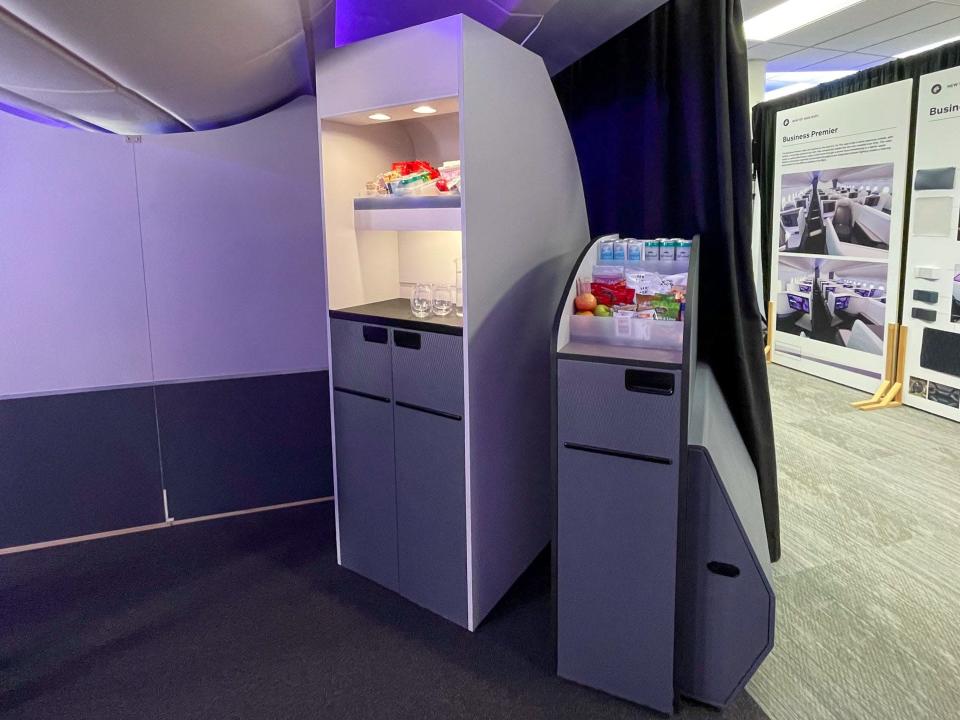
What I saw was just a model of the future cabins, but I can see how major changes like the Skynest and minor changes like wireless chargers would improve daunting long-haul flights to New Zealand.

Read the original article on Insider
[ad_2]
Source link
